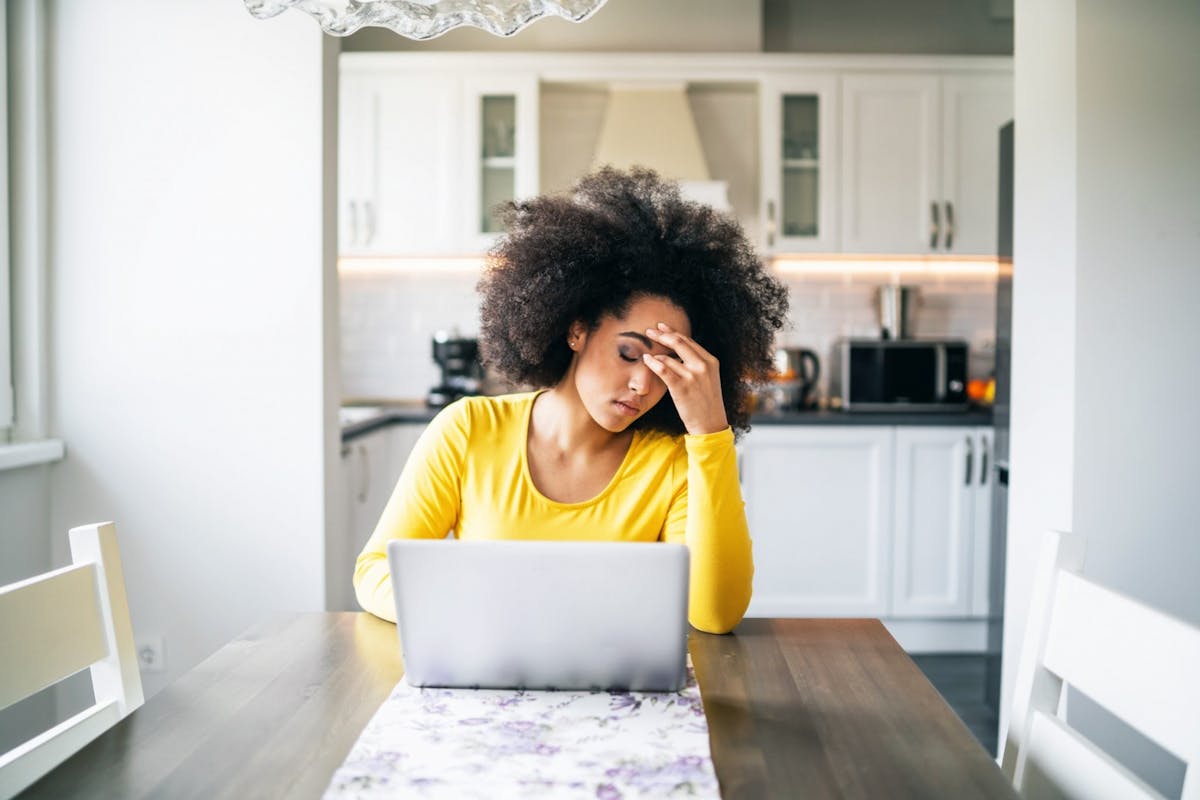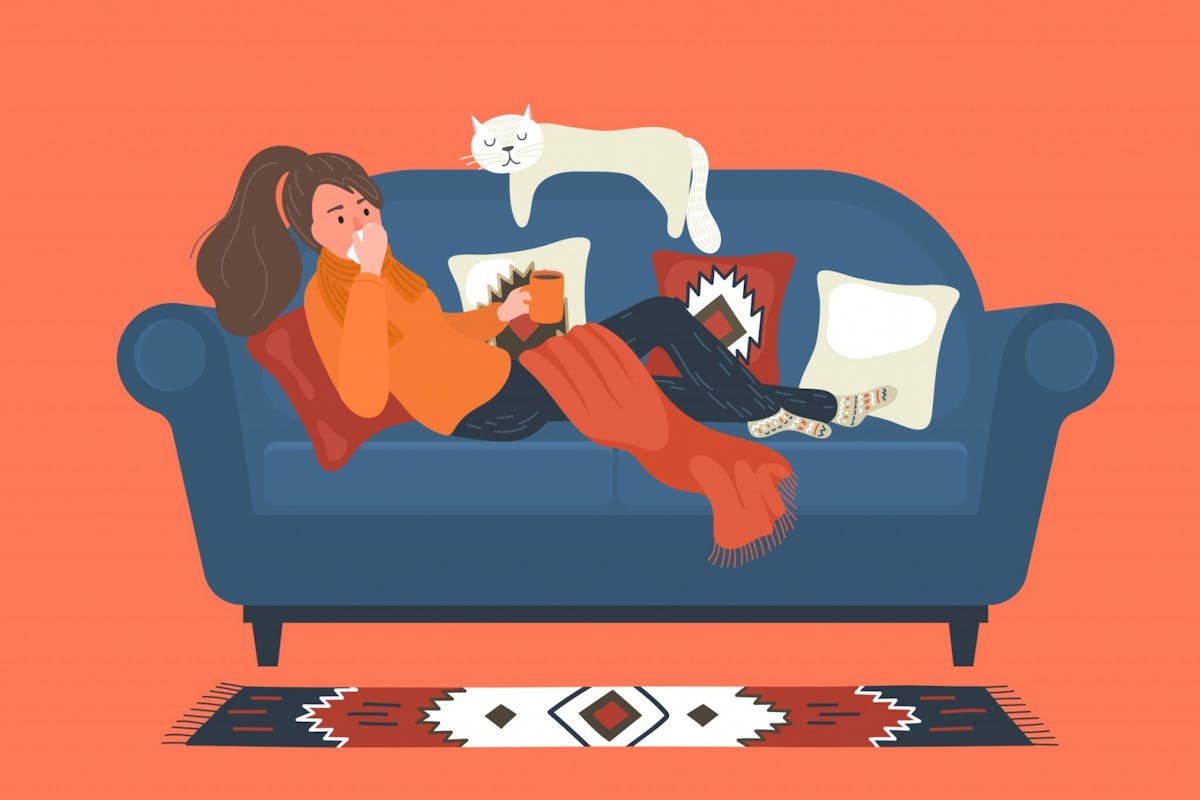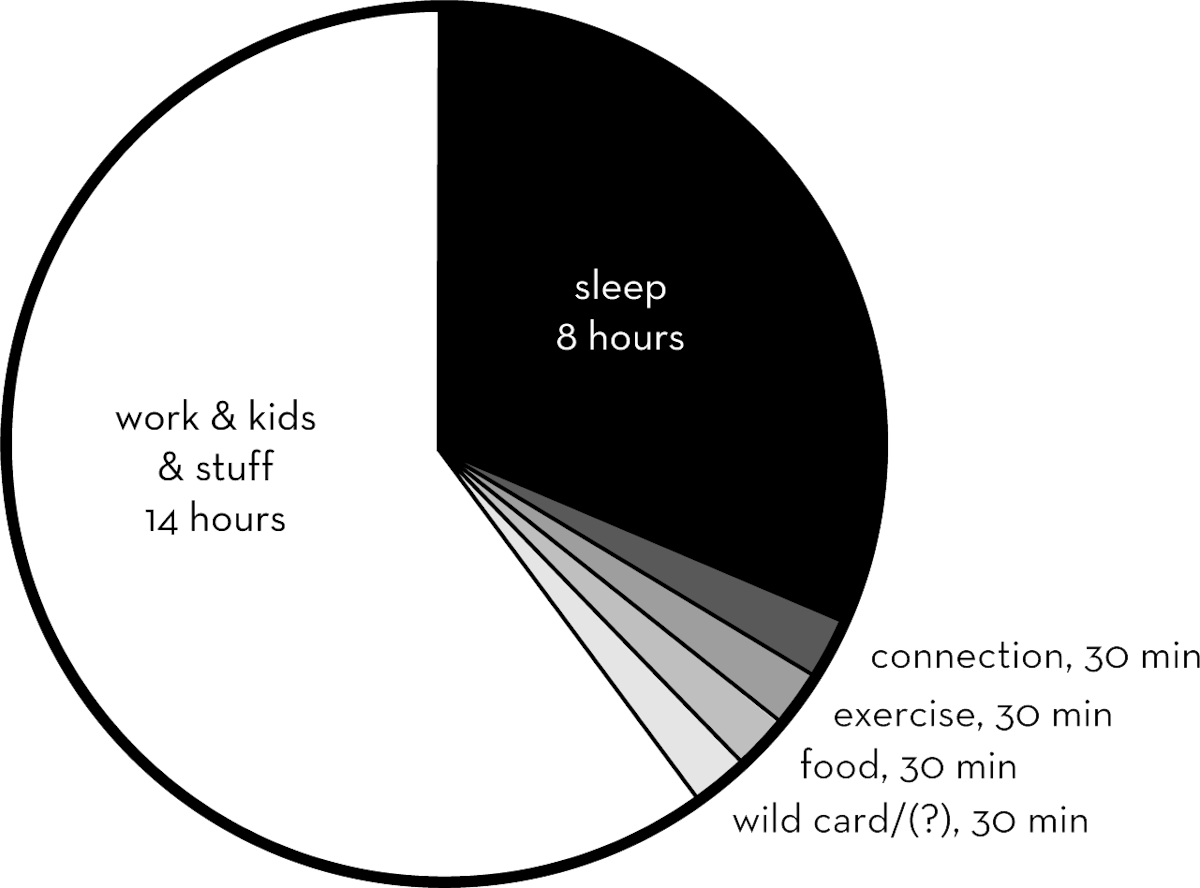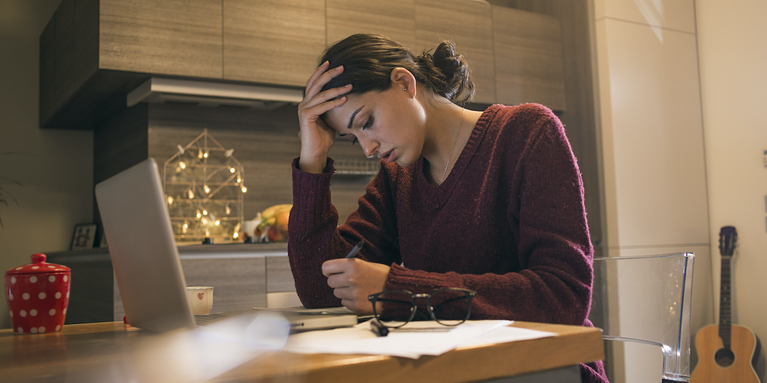Is working from home during lockdown making you feel stressed, anxious and overwhelmed? You could be suffering from burnout. Why not try applying this scientifically approved formula to your daily routine to see if it could help ease the pressure?
The coronavirus pandemic and UK lockdown mean that many of us have adapted to working from home during the crisis, and as we enter what feels like the hundredth week of this ‘new normal’, it’s understandable that we’re feeling the pressure.

Over half (56%) of UK workers are feeling more anxious and stressed during this time, according to new research from LinkedIn, conducted in association with The Mental Health Foundation. And while 47% of workers have ‘faked’ being busy because they’re scared they might lose their jobs, people are also working a massive 28 hours of overtime per month on average.
During this time, it’s important that we remember to look after our mental health, so what can you do if you feel overwhelmed by work stress? Read on to hear how the 42% rule could help ease symptoms of burnout and stress.
Exactly how much rest is an “adequate” amount?
Science is pretty clear on the amount: it’s 42%.
That’s the percentage of time your body and brain need you to spend resting. It’s about 10 hours out of every 24. It doesn’t have to be every day; it can average out over a week or a month or more. But yeah. That much.
“That’s ridiculous! I don’t have that kind of time!” you might protest — and I predicted you might feel that way (because I did too!)
But before you panic, I’m not saying you should take 42 percent of your time to rest; I’m saying if you don’t take the 42 percent, the 42 percent will take you. It will grab you by the face, shove you to the ground, put its foot on your chest, and declare itself the victor.
Have you ever come down with a terrible cold as soon as you finished a huge project? Have you found yourself sleeping 12 or 14 hours every day for the first three days of holiday?

It has been established by now that stress is a physiological phenomenon that impacts every system and function in our bodies, including immune functioning, digestive functioning, and hormones. To keep all of those systems in full working order, our biology requires that we spend 42 percent of our lives maintaining the organism of our physical existence.
Here’s what your 42 percent might look like:
 • Eight hours of sleep opportunity, give or take an hour.
• Eight hours of sleep opportunity, give or take an hour.
• 20 to 30 minutes of “stress-reducing conversation” with your partner or other trusted loved one.
• 30 minutes of physical activity. Do this with the explicit mindset of gear-switching, feels-purging, rest-getting freedom. Physical activity counts as “rest” partly because it improves the quality of your sleep and partly because it completes the stress response cycle, transitioning your body out of a stressed state and into a resting state.
• 30 minutes of paying attention to food. “30 minutes?” you say. Don’t fret. That includes all meals, shopping, cooking, and eating, and it doesn’t have to be all at once. It can be with people or alone, but it can’t be while working or driving or watching TV or even listening to a podcast. Pay attention to your food for half an hour a day. This counts as rest partly because it provides necessary nourishment and partly because it’s active rest, a change of pace, apart from the other domains of your life. Think of it as meditation.
• And a 30-minute wild card, depending on your needs. For some people, this will be extra physical activity, because they need that much to feel good. For others, it will be preparation for their sleep opportunity, because they know their brains need time to transition from the buzzing state of wakefulness into the quiet that allows the brain to sleep. For still others, it will be social play time, because their appetite for social engagement is strong. And for some, it’s simply a buffer for travel and changing clothes and other rest-preparation time (because: reality) during which you engage your default mode network — that is, you let your mind wander.
These are just averages, and as you can see, you’ll sometimes do more than one thing at a time. Some people need more sleep than others — sleep need is estimated to be about 40 percent genetically heritable, so even identical twins can vary a lot.
Natural exercisers may want to spend more time on physical activity. Foodies may want to spend more time on food. Extroverts may want to spend as much of this time as possible with other people. Your mileage may vary; fine-tune it to fit your individual needs.
If you’re thinking, I can get by with less, you’re right. You can “get by,” dragging your increasingly rest-deprived brain and body through your life. And there are periods in your life when adequate rest will not be an option. Newborn baby? No sleep for you. Elderly dog? You’ll be up every four hours. Working three jobs while finishing your degree? Get by on five hours of sleep.

But no one who cares about your wellbeing will expect you to sustain that way of life for an extended period of time. No one in your Bubble of Love wants you to “get by”; they want you to thrive and grow stronger. They want you to thrive and grow stronger. What makes you stronger is rest.
Suppose you send your 10-year-old child away to camp and you learn they aren’t feeding her adequately because they’re sure she can “get by” on less?
Suppose you leave your dog with a dog-sitter and learn they’re having your dog sleep outside in the cold because he can “get by” in that weather?
Suppose your best friend starts wearing a tight-laced corset everywhere, so that she physically can’t take a full breath and is constantly slightly oxygen-deprived, gasping as she climbs a single flight of stairs, but she can “get by” with that much oxygen?
Your child, your dog, and your friend can all “get by” with less than the optimal levels of every basic bodily need. So can you. But the way you react to your hungry child, your shivering dog, and your gasping friend is how you feel about you “getting by” with too little rest. Now, off to work out my calculations for tomorrow!
Recent Comments